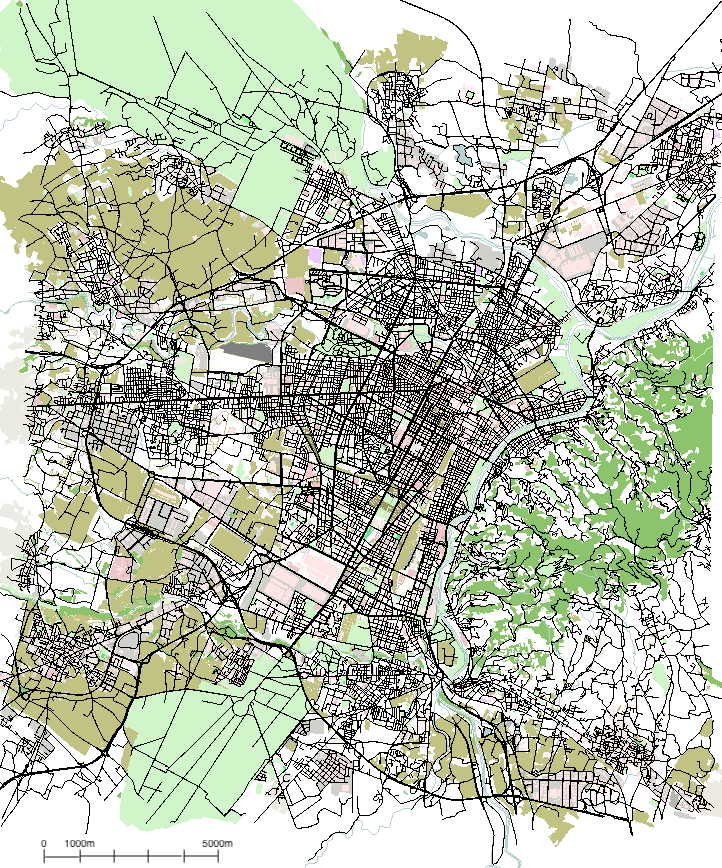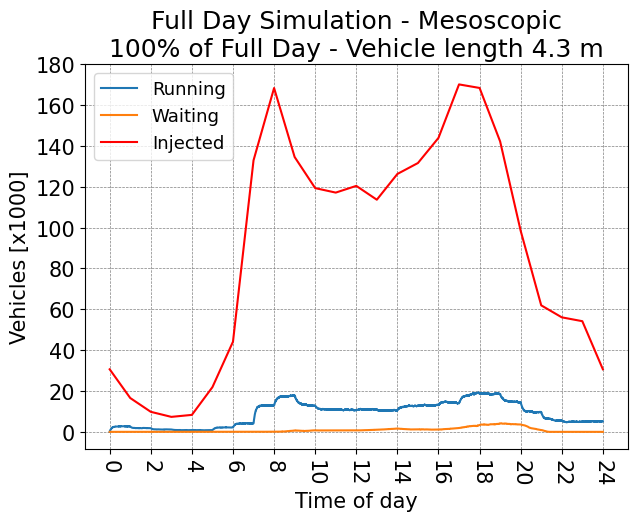Contacts: Marco RAPELLI [rapelli.m@libero.it], Claudio CASETTI [claudio.casetti@polito.it] and Giandomenico GAGLIARDI [giandomenico.gagliardi@5T.torino.it]
This project is licensed under the terms of the GPLv3 license.
Please refer to the SUMO wiki for further information on the simulator itself.
Due to the size of the considered scenario, input and output files may exceed the GitHub maximum file size limit of 100 MB. For this reason it is required to use Git LFS to download files.
The TuST (Turin SUMO Traffic) simulation scenario describes the traffic within the city of Turin, Italy for a whole day. The original demand data stems from real traffic data of 5T, a public agency managing all the traffic mobility data in the Italian region of Piemonte.
From the original OSM file, an accurate road graph was created using real average velocities from Google APIs and real traffic light phases from 5T data.
To validate the model, traffic flows were compared to real flows measured from 5T street sensors, creating in this way a very realistic large-scale simulator.
TuST Scenario has been developed with SUMO 1.1.0 and it has been successfully tested also with SUMO 1.2.0 and SUMO 1.3.1. Although it is possible to use it with more recent versions of SUMO, results may differ. Recommended SUMO version is SUMO 1.2.0.
-
M. Rapelli, C. Casetti and G. Gagliardi, "Vehicular Traffic Simulation in the City of Turin from Raw Data" in IEEE Transactions on Mobile Computing, April 2021. DOI: 10.1109/TMC.2021.3075985 URL BibTeX
-
Best paper award of DS-RT 2019 to M. Rapelli, C. Casetti and G. Gagliardi, "TuST: from Raw Data to Vehicular Traffic Simulation in Turin" in 2019 IEEE/ACM 23rd International Symposium on Distributed Simulation and Real Time Applications (DS-RT) October, 2019, Cosenza, Italy.
The TuST scenario can be launched directly with its configuration file.
$SUMO_HOME/bin/sumo -c TuST.sumocfgfrom the Scenario folder.
In order to rebuild the routes it is possible to launch the route configuration file.
$SUMO_HOME/bin/marouter -c RoutingConfig.xmlfrom the Scenario folder.
The TuST scenario generates a stable simulation, as highlighted by the following plot, where the number of waiting vehicles is used as a congestion metric. It is possible to see how congestion is solved after the afternoon traffic peak.
| Description | Value |
|---|---|
| Area | 602.61 Km2 |
| Traffic Assignment Zones | 257 |
| Nodes | 32,936 |
| Edges | 66,296 |
| Traffic Lights | 856 |
| Roundabouts | 501 |
| Total edge length | 6,570.28 Km |
| Total lane length | 7,723.40 Km |
| Final departed vehicles | 2,202,814 |
| Final waiting vehicles | 0 |
| Final running vehicles | 5142 |
| Final arrived vehicles | 2,197,672 |
| Total collisions | 0 |
| Total teleports | 334 |
| Total halting | 19 |
-
May 3rd, 2021: last journal article added, BibTeX updated.
-
April 10th, 2021: morning and evening peaks output files.

